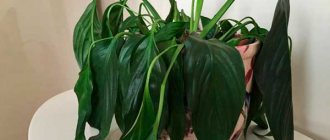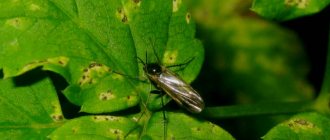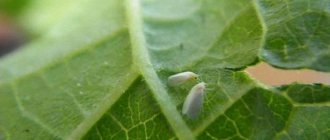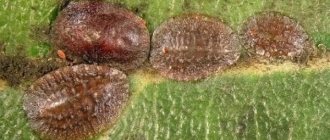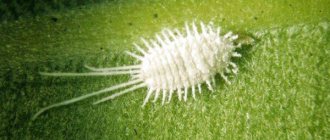To understand how to get rid of midges in the kitchen, you need to find out why and where they come from, as well as what type they are. The first question is simple. These insects enter the apartment if there is something to eat in it. Leftover fruits and vegetables, unfinished wine, spilled sweet tea, garbage not taken out and its remains in a bucket - any fresh or rotten product will become their food.
They also appear in homes in simple ways. In winter and autumn, pest eggs may be in the vegetables, fruits, cereals, house plants or soil you buy. In warm weather, adults fly in through an open window or from neighbors. Let's tell you more about who is hovering over your products and how to deal with them.
Reasons for appearance
The most interesting thing is that there is an explanation for all of the above. Insects choose the most suitable places for living and breeding. And which ones - it depends on the type of midges. But first things first. First, let's figure out how these crumbs appear in the apartment.
There are several reasons:
- Fruits and vegetables are not the freshest . The smell of plant rot is the most desirable aroma for small insects, and spoiled and fermented fruits, juices, compotes, beer are the best delicacy. In addition, this is a very suitable environment for growing offspring. It is worth noting that the female can lay eggs on still ripening vegetables and fruits, and when they get indoors, the larvae will receive the most favorable conditions for growth.
- Wet rags, poorly cleaned or clogged sink . High humidity not only pleases the midges, but makes them simply happy. If you add to the first the accumulated particles of food that have begun to rot, a rotten coating on surfaces and wet rags, and the unpleasant smell of all this, then it immediately becomes clear why insects are in such a hurry to “capture” these territories.
- Flower pots with indoor plants . Many housewives feed their indoor plants with used tea leaves. At the same time, excessive watering leads to rotting of tea leaves, the appearance of particles of rot and mold, plaque and an unpleasant odor. These are ideal conditions for midges. Plus the humidity is constantly high.
- "Generous" neighbors . If midges live with your neighbors permanently, then there is a very high probability that they will also want to visit nearby premises.
- Trash can and bags . A trash can that is taken out at the wrong time will immediately become a haven for small insects. Dirt and the remains of spoiled food will become a feeding ground for both adult midges and their larvae. Waste that has fallen onto the surface of a garbage bag or bucket and has not been noticed is perfect for laying eggs.
- Pets . In this case, it's not about the animals themselves, but about us. More precisely, we are talking about how we take care of our “smaller brothers” and monitor the cleanliness of their place of residence. When algae has grown in the aquarium and the water has stagnated, the cage with the rabbit has not been cleaned, pieces of vegetables are lost in the sawdust of the hamster, and the dog’s bowl has not been washed for a long time, sooner or later the organic matter will begin to rot and attract midges. And they will already find an opportunity to roam and bring offspring.
To summarize, we can say that there is still a danger from midges staying in an apartment. Insects do not sit still, they “travel” to different places and objects. They can start with a rotten apple in a trash can or with moldy soil in a flower pot, and end in the kitchen, on the dining table. The route may be different, but the essence is the same: willingly or unwillingly, they are carriers of many harmful bacteria that can lead to infections. Consequently, the entire life of small insects depends only on human actions, on keeping the house clean and carrying out preventive work.
Interestingly, insects can live in a city apartment all year round. Their number depends on the presence of a favorable environment and temperature. In summer, when the temperature is more than 18°C, they live for about 3 weeks, at low temperatures - about 1.5 weeks, and at zero - the insects die. In addition, larvae and adults die after a few days if they have nothing to eat
Disinsection of surfaces
Flying midges are not constantly in the air; sooner or later they land on surfaces - window sills, walls, window frames. These areas can be treated with a general purpose pest insecticide that will kill the pests on contact. Any aerosol insect repellent that you find in the store will be suitable for this purpose, for example, such as:
- Raid
- BROS
- Bona Forte
- Delicia Station Wagon
- Doctor Klaus
- Taiga Barrier
- Dichlorvos Varan
- Combat Multispray
You can also manually treat entire rooms with insecticides, spraying an aerosol into the air around the perimeter of the room, or use foggers - self-spraying insect repellent aerosols for rooms. Bona Forte, Dr.Klaus, Argus have products in this form. You can find instructions for use of any drug on its label or on the manufacturer’s official website.
Carefully!
Insecticides should not be used on surfaces in contact with food, dishes, plants, children's toys, bedding, clothes and pet items.
If insects hover near the drains of sinks, bathtubs, washing machines, or around water pipes, then the area around them and all drains in the house must be treated with ordinary household chemicals. Liquids can be poured into pipes to clear blockages, as well as universal gels:
- Tiret
- Domestos
- Cif
- Frosch
- Comet
- Synergetic
Midges lay larvae in drain holes and feed on microorganisms growing in a humid environment. Regular cleaning of pipes
helps not only to destroy pests inside the communications, but also to reduce the likelihood of sewer blockages.
Helpful advice
To repel midges that may fly in from the street, you can use mosquito fumigators with liquid or plates, but turn them on during the day and not in the evening before bed.
Types of midges
It would seem that very small midges will not create problems and getting rid of them is a couple of trifles. And this, indeed, may be the case. But only if there are only a few insects, the reason for their appearance is immediately found, measures are taken to eliminate the pests, cleaning is carried out immediately and everything necessary is done to prevent their reappearance. Otherwise, drastic measures will have to be taken in full. Since it is already known how “kids” appear in the apartment and where their favorite places are, we need to find out what they are, whether they are the same or different, what are their differences and characteristic features.
The family of dipterous midges has about 2000 species. This article discusses the most common domestic species.
- Drosophila (wine or fruit midges)
The size of the insects varies from 1 to 3 mm, the color can be light or dark brown, dark yellow, rarely, but orange or black individuals can be found. Most often, midges can be found in the kitchen, where they look for fruits, sweets, and vegetables, which they can eat and lay eggs on. Pests will not ignore fermented juices and alcohol, and will not fly past the sink or trash can.
- Sewer (humpbacks)
The body of insects has a thick “hairy” covering. These midges are delighted with dampness, dark rooms, leaky sewers, a dirty kitchen or a clogged sink. They can become carriers of dangerous bacteria.
- Whitefly
Whiteflies have a characteristic body color; it appears to be covered with powdery white pollen. Insects can reach from 1.5 to 3 mm in length. Midges like warm, rarely ventilated rooms. It’s good if there are indoor plants in the apartment, the soil of which is oversaturated with moisture, then the presence of small pests can be easily determined by the sticky white coating on the shoots. They eat plant sap, and under the leaves you can find larvae that look very much like scales.
- Sciarida (fungus gnat)
Small black midges (from 3 to 5 mm) are also partial to indoor plants. Insects flying over apartment flora are harmless; they reproduce in the soil of flowers oversaturated with moisture, but the larvae grow quickly, taking juices from the roots of plants and nutrients from the soil.
You can also often find pests in homes:
- Wardrobes (they love wardrobes).
- Water (they look for places where the humidity is highest or where there is constant water).
- Gnusov (bite a person).
When the type of midges is known, it is much easier to choose a method to combat them. But, first of all, it is necessary to eliminate the cause of the appearance of insects in the apartment.
Types of flies, their habitats and harm to humans
Now you know where midges come from in the kitchen. They can be fruit and flower. The first ones are called fruit flies, and more often they look like small flies with a yellow-red or brown color. The second are sciarids (fungus gnats), which usually have black wings and bodies. Whiteflies are also found in houses - the smallest of the listed insects, no more than 2 mm in length. As for their appearance, the name speaks for itself. They, like sciarids, come to you with contaminated plant soil or through windows.
Photo: Instagram @rntogrbreloaded
Photo: Instagram @aphytophilesgarden
Photo: Instagram @riken_cbs
Photo: Instagram @raony_rj
If you have a winter garden on your windowsill, take a closer look at it. Did you see more pests circling around them? Most likely, the source is there. Too moist soil and heat are enough to activate the larvae. If there is garbage or rotten food, adult sciarids can move to the entire kitchen area.
Where do fruit flies live?
- Waste bucket. Even if you empty it regularly, there will be streaks or food residue left behind.
- Sink drain. It can become clogged, and if it is not cleared in time, mosquitoes will appear from there.
- The space under cabinets, tables, and other furniture. If food rolls in there or a sweet liquid spills there, fruit flies will find it.
- Open bottles with beer, wine, vinegar. Even when empty, containers can become a source of problems.
- Mushrooms, cereals. This is not the most favorite place for annoying midges, but you shouldn’t keep it open.
- Food stains on the refrigerator.
- Wet old sponges and washcloths.
- Dirty pet bowls and cages.
- Cleaning
How to store cereals to prevent moths and bugs from infesting them: 10 valuable tips
Why are fruit flies dangerous?
As adults they are harmless, but their larvae create a serious problem. If they enter the human body, they can cause enteritis and intestinal upset. Sciarids and whiteflies usually only harm plants. The former eat the root system of the flower, and the latter eat the soft, succulent leaves.
Photo: Instagram @vikasavyou
Unlike fruit flies, flower flies are difficult to eliminate. The infected plant becomes covered with spots and stops growing.
If they are not removed immediately after infection, the plants will die. Therefore, it is imperative to fight them. Fortunately, there are plenty of ways to deal with insects. First, we’ll tell you what to do immediately after detecting them.
- Cleaning
Bugs in cereals: how to get rid of pests in the kitchen
Eliminating causes depending on the type of midges
Different pests require different approaches.
Drosophila in fruit
- Throw away all spoiled fruits, vegetables and fermented berries.
- Get rid of all fruits that are in doubt, as they could come into contact with midges and become carriers of insect larvae.
- Conduct an audit of all available products and carefully check their expiration dates.
- In the room with “tenants”, do a thorough cleaning using household chemicals.
- It is advisable to install anti-mosquito nets with a minimum mesh on the windows.
Humpbacks in pipes
- It is necessary to make sure that the communication systems (sewage, drainage and water supply) are in good order: there are no leaks, rotten areas (on metal risers), accumulation of debris and mucus in the siphons of kitchen sinks and bathtubs, etc.
- Carry out work to eliminate problems with pipes using cleaning and disinfection products.
- To repel or kill insects, use insecticide sprays.
- At least once a week, use special gels or other cleaning products to treat drains.
- Carry out preventive treatments regularly.
Fungus gnats in indoor plants
- Check the flower soil for its moisture level and change the plant watering schedule.
- Make sure that each pot has proper drainage.
- Partially or completely replace the soil, pre-treating it with appropriate fungicides.
- Use mineral fertilizers produced by industry, following the manufacturer's recommendations.
- Periodically treat plants with special chemical compounds.
What if there are midges in the sink?
If you suspect that midges have infested your sink, it’s worth checking first. The technique is very simple - seal the drain hole with tape or regular cling film, again smeared with honey. If after an hour insects were found on the surface, then the suspicions were confirmed.
Getting rid of this problem is very simple - you need to pour a boiling soap solution into the drain. After this, the walls are also cleaned from accumulated fat with a special brush. You can also use store-bought powders like “Mole” or gel-like products, for example, Tiret.
It is better not to let the sink reach this state.
Traditional methods
Many housewives are not supporters of chemistry - today there is enough of it everywhere. Therefore, they successfully use folk methods, homemade traps, or traps that are as safe as possible for humans. Most methods are designed for the insects’ reaction to different odors, and since midges are not fans of aromatherapy at all, the methods are very effective.
Ground cloves (drenched in boiling water)
Apartment midges are not at all delighted with this spice, but it can easily make them run away from the house, as far as possible and as quickly as possible. To do this, pour 5 g of ground cloves into 1 glass of water and put on low heat for 2 hours, achieving a rich, specific smell that repels insects.
Garlic
Many insects cannot stand the smell of garlic, and midges are no exception. Therefore, if you place the cloves of this vegetable (whole or sliced) on shelves or near pots of plants, the midges will scatter in all directions.
Horseradish
Similar to the previous vegetable, you can use chopped horseradish left in the kitchen. The specific aroma of the plant's roots will quickly disperse insects.
Tomatoes
Tomato seedlings or already mature plants growing indoors in pots will become a big problem for the ubiquitous midges. Green tomatoes have a characteristic smell that insects do not like, which means the latter will not stay in the apartment.
Geranium
This indoor flower can, without exaggeration, be called a universal remedy for many insects. Moths, mosquitoes and flies cannot stand the smell of this plant at all; you can safely add midges to their friendly team. Indoor geranium on the windowsill will both decorate the room and protect it from pests.
Essential oils
Insects, indeed, actively react to different odors and to many of them their reaction is negative. Today you can find a wide variety of essential oils that will not only drive pests out of your home, but also fill it with pleasant aromas. If you choose sets of 3-4 oils, the effect will be much better:
- Camphor, cloves and tansy.
- Incense and fir, pine and patchouli.
- Vanilla, geranium, wormwood and tangerines.
- Ylang-ylang, lavender and lemon.
- Cedar and pine, tea tree and juniper.
You can achieve a good effect from the use of essential oils not only with the help of an aroma lamp, but also by applying a few drops of oil to a warm frying pan, to the lampshade, to the radiator (if the heating season has already begun). You can place sprigs of tansy and wormwood in the room on shelves - a bay leaf, or treat the surfaces with a spray bottle of water to which a few drops of any essential oil have been added.
Indoor lemon
An indoor lemon tree will be an excellent ally in the fight against midges. And when crushed in your hands, the leaves will fill the entire room with their aromas and help you forget about small pests for a long time.
Hellebore water
Hellebore water is well known to many as an active antiparasitic agent used to combat head lice. But it has a deadly effect not only on lice, but also on apartment midges. To get rid of flying pests, you need to moisten a dish sponge with the specified solution and place it in the place of greatest concentration of midges for 8 hours. During this time, the insects will die.
Matches
When midges periodically appear on indoor plants, you can use the most ordinary matches (4-5 pieces) to combat them. They need to be stuck into the ground with the sulfur heads down. When the sulfur dissolves, the matches must be replaced with new ones. This procedure must be carried out several times (every other day for a week) to completely expel the pests. Not bad for the same purposes ( freeing flora from insects ):
- Wood ash. Sprinkle the soil generously in the pots.
- Potassium permanganate. Water the soil with a solution of small concentration (very carefully so as not to harm the plants).
- Citrus scented soap. Treat the flower leaves with the prepared soap solution, leave for a while, and then rinse.
- A solution of tar and laundry soap (20 g of soap shavings per 1 liter of water). Water the soil around the plant with a very weak solution.
- Cockroach chalk. Finely crush and sprinkle on the ground.
- Garlic infusion. Chop 3 garlic heads, pour 1 liter of boiling water and let it brew for 4 hours. The product is suitable for treating soil and flower leaves.
Cultivation of soil in pots
If midges have infested flower pots, and you are not sure that the indoor plant will survive replanting, you need to use the previous traps and ways to repel midges, and also start cultivating the soil. There are several solutions that will help with this:
- garlic - rub the garlic head and pour boiling water (0.5 liters) and leave for 2-4 hours. The soil is watered with this solution and the plant is also sprayed. The remaining pulp can be buried to the roots;
- soapy - you need to grate a quarter of the laundry soap, dissolve it in a liter of water, spray the plant once a week;
- sulfur - four matches are stuck into the ground with the head down, replaced every other day. The plant must be watered after each replacement of matches;
- antiparasitic - any antiparasitic product purchased at a veterinary store will do. Dilute according to the instructions in a dosage suitable for puppies and water the plant.
If the plant is able to survive transplantation, then it is better to acquire new land.
Homemade traps
The advantage of self-made traps is that they are completely safe for people, and for making them you can use the simplest and most affordable means at hand.
Glass jar
To attract insects, place a few pieces of spoiled fruit or pour a little beer, jam, sugar syrup, etc. at the bottom of a glass jar (volume 0.5 l or 1 l). Cover the top of the container with cling film or a cellophane bag. Make several small holes in a well-tightened “lid”, which will become “entrance doors” for midges rushing to the treat. But the midge will no longer be able to get back out.
Instead of a can, a disposable plastic cup is often used, but paper can be an alternative film option without any problems. Just don’t cover the neck of the jar with it, but make a funnel with a small hole at the end. Insert the resulting cone into the jar with the bait, tip down, cover the joints with tape and the trap is ready. If plastic devices can be disposed of along with midges, then what to do with the jar? There is an opinion that a jar closed with a polyethylene lid can be placed in the microwave for 30-40 seconds at a power of 600-700. All insects will die, and nothing will happen to the container.
Plastic bottle
Cut off the top part of a 1.5-2 liter bottle. Turn the resulting cone over and insert it into the remaining lower part of the container. To ensure that there are no gaps left, seal the joints of the two elements (on the side) with tape. Place your favorite midge treats at the bottom of the structure. For insects that get inside, there is no way back.
Detergent solution
The trap is convenient because you don’t have to figure out what to cover it with or how many holes to make. Everything is very simple. Fill any container ¼ full with warm water, add 1 tablespoon of apple cider vinegar and 1 teaspoon of dishwashing liquid or shampoo (the amount is given per 0.5 liter jar) - the device for catching midges is ready.
Plastic bag
The simplest version of the trap. You need to put a rotten piece of banana or a few “stale” apple cores in the bag. Open the package slightly and wait until the insects have settled inside and there are a sufficient number of them. When you decide: “It’s time!”, the trap must be carefully and quickly tied, and then thrown away along with the contents.
The bait for annoying midges can be sour or sweet liquids: apple and wine vinegar, wine, juice, beer, compote or honey
Brew trap
Midges will never fly past dessert wine or beer. To lure insects into a trap, it is enough to leave an open, empty, but not washed bottle of “tempting” drinks on the table. In less than a couple of hours, there will be an incredible number of fruit flies inside the trap. All that remains to be done is to quickly plug the cap and throw away the bottle.
Milk, water and formaldehyde
An effective trap that can be placed not only in problem areas, but also on a table or windowsill. The composition is prepared from water, milk and formalin in proportions 5:3:1. The mixture is poured into a plate or not very deep bowl and placed in the place of greatest concentration of pests.
Milk with pepper
The proposed trap is made similarly to the method described above. Add 4 tablespoons to 1 glass of warm milk. lie ground (black) pepper and 8 tbsp. lie Sahara. The mixture is boiled for 10 minutes over low heat, and then a small plate is filled with it and insect catching begins. You can soak sheets of paper in this solution and hang them over areas where midges accumulate. Diptera will be tempted by sweet and peppery baits, for which they will pay with their lives.
Fighting onion midge: best methods
Midges are small flying insects with two wings that happily settle in human homes and feed on plant foods.
In fact, the onion midge consumes not only onions, but also settles on other fruits, berries, and vegetables that are not stored properly in the apartment. There are several species of midges that live on plant products, and most often these are Drosophila (fruit flies) and soil flies.
You should not think that, apart from aesthetic harm, such small insects do not interfere with humans in any way. Even small midges are carriers of diseases. In people prone to allergies, their bites can cause severe skin reactions and swelling.
These insects lay their eggs on food, the larvae emerge from them and immediately begin to feed intensively. Midges stain furniture, walls, and can even fly into a person’s mouth and nose.
Here are the main signs of midges that most often settle at home:
- Size – 1-3 mm
- Oval body
- Slow flight, not like a regular fly
- Six legs, two wings
- Yellowish, brown, black body color
ATTENTION: Whatever species the onion midge belongs to, in a very short period of time its colony will become numerous, because these pests reproduce extremely quickly.
Mechanical methods
The action of some products requires a certain period of time and the insects, accordingly, will disappear gradually. Not everyone wants to use chemicals. Those who can no longer tolerate the presence of midges and want to get rid of them as quickly as possible (this may be most of the swarm) should try the following methods:
Vacuum cleaner
Household appliances are always a reliable assistant in the home. Therefore, many consider a vacuum cleaner an effective means of combating midges. Although they can only collect a large cluster of midges, and even then, some will still run away, and the next day they will have to hunt for the next “batch.” Nevertheless, portable vacuum cleaners are quite popular - I tracked down insects, caught a few and it became easier - at least some of the pests were destroyed. To increase the number of pests caught, you must first set a bait that will gather a large swarm around itself, and then turn on the vacuum cleaner at full power.
Hydration
With the help of a spray bottle, you can indeed moisten the wings of insects and the latter will not be able to fly. This method works, but has several nuances. You immediately need to think about where to quickly remove the midges, and, secondly, correctly calculate the degree of moisture, so that later you do not have to fight the flood.
Ventilation
Ventilation of the apartment must be carried out regularly and without fail. Good air circulation will prevent the appearance of unpleasant odors and excess dampness. Through ventilation can remove a considerable amount of midges from the house.
Smoking
The method is based on insects’ intolerance to strong specific odors. There are several options, but before using each of them, you need to make sure that no one in the house is allergic to the components used.
- Camphor in a frying pan
To make camphor work and release the characteristic smell of wormwood, you need to pour the powder into a well-heated frying pan. With such an amazing scent, you can go around all the rooms or leave it until it cools down in the room with the highest “concentration” of midges. In the absence of camphor, clove oil or verbena will be no less effective.
- Incense
The phrase “he’s as afraid as the devil of incense” can easily be applied to midges. Fumigation will force insects to quickly and permanently leave the occupied territory. There is no incense - it’s also not a problem; you can safely take sprigs of thyme, pine or juniper for burning.
Mosquito nets
It seems like I installed a mosquito net and not a single insect will penetrate the house, but they break through even such protection. It's all about the cell size (from 0.6 to 1.2 mm) and it cannot always stop midges.
Then additional protection is applied:
- The “old-fashioned” way is to buy the most inexpensive nylon tights, cut them and add another layer of mesh.
- Chemical repellents are sprays that can be applied to the mesh, and they will repel midges.
- Natural helpers - vanillin dissolved in vodka or water, sprayed over a mesh from a spray bottle, and essential oils of eucalyptus, lemon balm, lemon or tea tree are applied using a cotton swab. After such treatment, you can be calm - not a single midge will get into the apartment.
Destruction of soil flies
If there are midges in flower pots, you can get rid of them by watering the plants with a solution of special preparations for soil pests. These products are inexpensive and can be purchased at a hardware store or at a large household goods supermarket, for example, OBI or Leroy Merlin. You can also go to the nearest flower shop and ask for the necessary product there.
You can use one of the following midge repellents:
- Fly eater;
- Intavir;
- Grom-2;
- Bazudin;
- Aktara;
- Fitover;
- Actillic.
If regular treatment of plants with chemicals does not help, you can take radical measures and get rid of insects by replacing all the soil in the pots. You will need to carefully remove the plant from the pot without damaging the roots, shake off the soil and rinse it (with water or a weak solution of potassium permanganate), throw away the soil from the pot, and rinse the pot itself thoroughly. It is important that there are no midges in the new soil either.
To disinfect the soil, you can leave it in the freezer for several days. The temperature should be low enough to freeze all the larvae.
Chemicals
If all of the above methods do not give the desired result and the number of midges in the room becomes catastrophic, “heavy artillery” enters the battle - ready-made means of varying degrees of toxicity and intensity of action. In the proposed list of funds we will move from less powerful to more active.
Repellents
The principle of operation of effective repellers is simple: a special strip impregnated with the active substance is placed in a tank. When the active composition begins to act, the midges either die or rush to leave the home. What you must do after using this product is to regularly ventilate the room well. Among the most popular are “Gardex” and “Breeze-Anti-Mosquito”.
Light traps (zappers)
Special electric traps are among a number of new devices for killing insects. The operating principle of the device is based on the enormous “love” of midges for light. The dipterans rush towards the soft light emitted by the lamp, fall on the internal metal mesh, which is always under voltage (safe for humans), and die. Such traps are quite easy to install, and their obvious advantage is the absence of chemicals.
Glue traps (industrial)
Sticky traps offered by the industry are among the most harmless and affordable means of insect control. They are best used in areas where food is prepared or stored. Velcro tapes should be unrolled and hung under the kitchen ceiling, the result will be visible the very next day.
Velcro, made on a flat surface, is great for killing insects in plants. The device is installed in the ground so that it does not interfere with the flower, and with an alluring aroma it takes on the entire “blow” of the pests. The best representatives of the drugs in this series include: “Flies Away”, FT 001 with an attractant and “Bros”, “Silvalure”.
There are Velcro that fold into the shape of a house, they are effective, they can be placed on shelves, near products, and they have an attractive, clean appearance (“Raptor”, “Aeroxon”).
Fumigators
Compact devices are designed to activate insecticides by heating (fumigators operate from an electrical network). The latter are part of the liquid that fills small reservoirs or special plates. A correctly selected product is designed for a specific area and will ensure the absence of midges in a certain area for a sufficiently long period of time (“Combat”, aquafumigator “Raptor”).
Aerosols
The use of aerosols requires mandatory compliance with all manufacturer's recommendations and compliance with safety precautions. Considering that the chemicals will work for a certain time indoors, it is worth taking care of children's things, toys and food. All of the above must be carefully packed or hidden.
It is important to remember that aerosols and sprays with insecticides can only be used in well-ventilated areas. It is better not to use such products in the children's room and kitchen; if necessary, then act with special attention and caution.
“Combat”, “Raid”, “Dichlorvos”, “Hexachloran”, “Chlorophos”, “Raptor” are some of the most effective means that are used against house flies. And, even if their modern analogues have a pleasant smell, we must never forget that the active substance of these drugs is poison.
How to get rid of midges using purchased products and prevention
Some of the most popular products are Raptor and Aeroxon Velcro. The principle of operation is the same as that of self-made traps. Insects are attracted by the smell of liquid that is soaked in cardboard or tape. They fly in and stick tightly to the surface.
There are also more aesthetic devices - zappers. These are light devices that kill pests with electric current.
Photo: Instagram @biologist_erin
Prevention methods
As practice shows, it is much easier to prevent a problem than to deal with its consequences later. This also applies to midges. Keeping your home clean and carrying out preventative maintenance is not as difficult as it might seem.
Enough:
- Take out the trash regularly and keep the trash can clean.
- Periodically check food products for freshness and compliance with expiration dates.
- Spoiled food should be thrown away immediately, or better yet, taken out of the house immediately.
- Keep the sink, bathtub and toilet clean, promptly clear blockages, monitor the passage of siphons and disinfect them (“Floop”, “Perffi div”, “Mole Turbo”, “Pothan”).
- Constantly monitor the cleanliness of your pets' aquariums, cages, trays and bedding.
- Properly water indoor plants and periodically treat the soil with preparations from specialized stores (“Aktara”, “Aktellik”).
- When cleaning, use essential oils or products with a strong odor, which midges are not at all happy with.
- Install mosquito nets (in warm seasons).
Prevention rules - how to prevent midges from appearing in your apartment in the future?
Preventing the appearance of midges in your home is very simple and clear. This -
Compliance with hygiene rules for residential premises
- Regular cleaning and trash removal.
- Regular cleaning of the trash can.
- Siphon cleaning.
- Timely discarding of food that has begun to spoil.
Also, pungent and persistent odors are good for preventing midges. For example, the smell of garlic or geranium, camphor or incense, if they do not prevent the appearance of midges 100%, will significantly reduce the risk of their appearance.
These measures are guaranteed to rid your home of annoying, uninvited guests.
Source: colady.ru
What to do if you find onion midges?
How to get rid of onion midges is a paramount question, and you need to start solving it by finding a place for their active reproduction. The main thing is to leave pests without food and a breeding ground for their offspring. The procedure will be as follows:
- Throw away spoiled onions, carefully sorting through all available vegetables.
- Place the onions in the refrigerator without signs of rotting or spoilage, placing them in small portions in plastic bags.
- If it is not possible to put onions and other root vegetables in the cold, they should be stored in boxes with sawdust, or, as a last resort, in well-ventilated fabric bags.
- Remove all fruits, especially citrus fruits, out of reach of midges.
- Throw out garbage on time, at first - 1-2 times a day.
- Wash dirty dishes immediately after eating.
- Limit the access of insects to water - they also need it for life. To do this, you should close all taps so that they do not drip, leave sinks dry, do not store water on the table, and thoroughly dry clean dishes.
- Remove and clean siphons a couple of times a week and use disinfectants to clean the sewer system.
- Wash your pets' cages regularly and prevent food residues from being left there.
IMPORTANT: If there are plants in the apartment, they also need to be cleaned, because insects can settle on them for lack of other food. You should reduce the frequency of watering and stop pouring tea leaves on the ground. If necessary, you can spray the flowers with a weak solution of potassium permanganate.
How to prevent the reappearance of pests?
To prevent insects from settling in your house or apartment again, you need to take measures to repel them. Thus, onion midges cannot tolerate the smell of pine needles and basil. Therefore, you need to purchase essential oils of fir, pine, and basil, soak cotton wool in them and place them in places where vegetables are stored.
Insects do not like the smell of clove seasoning - it can be stuck into citrus fruits that are stored outside the refrigerator. Midges also react negatively to the aromas of ylang-ylang, patchouli, and verbena oils, so they can be dripped into aroma lamps and used regularly.
Midges also cannot stand the smell of camphor, which, by the way, is absolutely not harmful to humans. Preventing the appearance of midges is not difficult, but it is effective, and an unpleasant neighborhood will most likely not happen to them.
Source: gdeklop.ru
Reviews
A homemade apple cider vinegar trap works well. Quickly and without much effort I got rid of all the flies.
I buy the Aeroxon trap all the time. The result is excellent. You never see flies in the kitchen. They are great for bait.
I recommend Combat Multi Spray aerosol to everyone. I have never come across a better remedy.
Who among us has not encountered this problem? Midges appear suddenly in an apartment and are very annoying, annoying the residents with their presence. Some species - and there are a lot of them - can even bite. But the good news is that the methods of dealing with them are the same, and you don’t have to read a bunch of literature in order to determine which of their representatives you are fighting with.
The content of the article:
Possible ways of entering the home
To destroy fruit flies and their relatives in an apartment, it is necessary to completely stop the life cycle of these pests. This is only possible if you find places where small midges lay eggs. Destruction of only flying insects will not give the desired effect, since they will be replaced by newly hatched individuals. It is a well-known fact that fruit flies prefer to lay eggs on very ripe fruits and vegetables that are beginning to rot. However, this is not the only place where they can be found. Wherever there is moisture and food, small flies settle.
Ways to deal with flies in an apartment
If fruit flies or other small midges appear in an apartment or house, the following actions must be taken:
- inspect the pots with plants and, if necessary, reduce the amount of watering, and also treat the soil with a weak solution of potassium permanganate;
- throw away garbage and disinfect the trash can;
- pack food products in plastic containers or plastic bags;
- clean animal feeders;
- Check the serviceability of the drain hole in the kitchen sink, remove wet sponges and rags.

